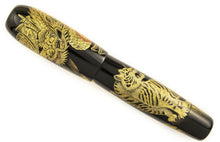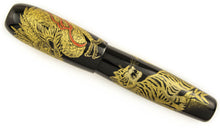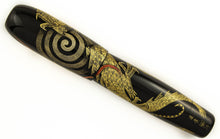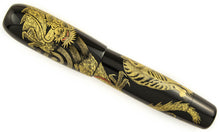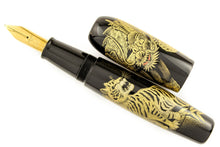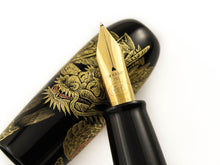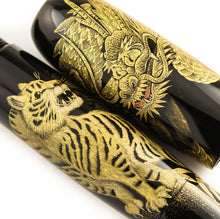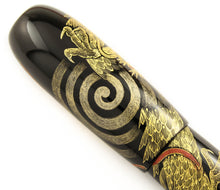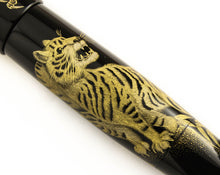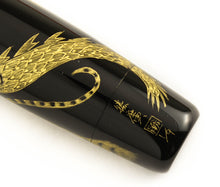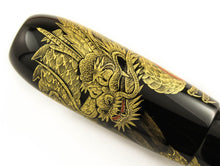
Please message us for availability!
The tiger and dragon are ancient symbols of yin and yang, forces that combine to make up the universe. Ancient Chinese Taoist philosophy explains the world in terms of two forces yin and yang. The two spirits are so different and yet so similar at the same time, mortal enemies linked together by destiny.
For Maki‑e art, Chinkin should start with Okime, which is the initial Urushi transcription of a design onto the finished surface. Very fine chisels are used to carve and trace the lines of the designs, and sticky Urushi is rubbed into the grooves. Finally, gold foil, powders or colored Urushi powders are sprinkled over the design and the surface is cleaned by Washi, Japanese paper. Chinkin was originally developed in Wajima in the 13th century; it is called Sohkin in China.
Today's Chinkin is quite different from Chinese Sohkin. Wajima is no longer the only source for Chinkin; it can be found in the Fukui and Akita Prefectures, Okinawa (Ryukyu), and Aizu of Fukushima Prefecture. The types of chisels used varies throughout the regions. Wajima remains most famed for the art of Chinkin.
This design is extremely detailed. The artist, KATSUHIRO (whose real name is KATSUHIRO NISHI).
The writing instrument features a medium Tohma #55 solid gold 18k nib.











